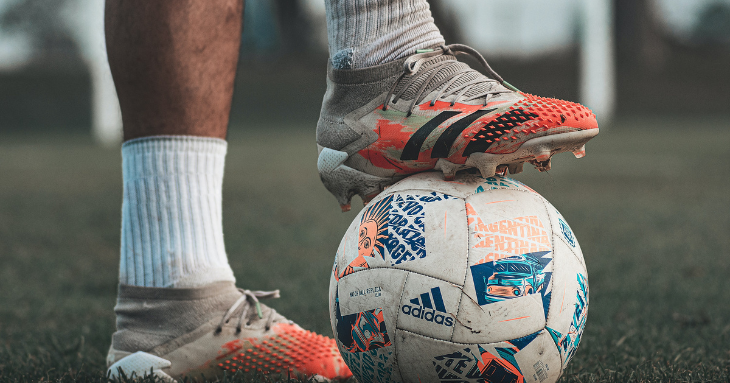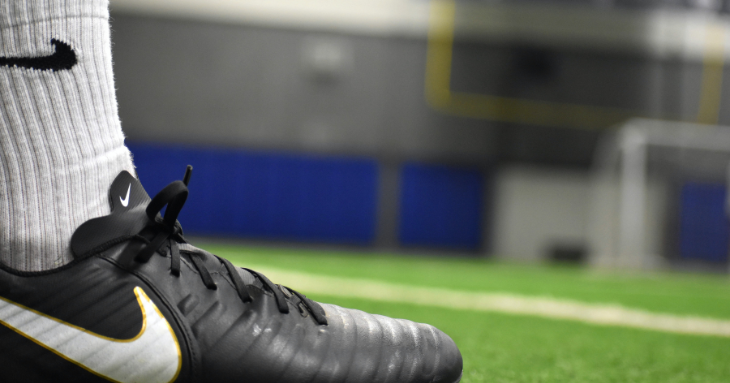
How to Choose the Right Soccer Cleats for Your Child
Soccer is a fantastic sport for kids to learn teamwork, stay active, and have fun. One essential piece of equipment for young soccer players is the right pair of soccer cleats.
These specialized shoes not only provide traction but also support and comfort during games and practices. However, with so many options available, choosing the right soccer cleats for your child can be a bit overwhelming, especially if you’re new to the world of soccer gear.
In this post, we’ll break down the key factors to consider when selecting soccer cleats to ensure your child’s comfort and performance on the field.
Table of Contents
- Understanding Different Types of Soccer Cleats
- Consider Your Child’s Playing Surface
- Choosing the Right Fit
- Material Matters
- Support and Ankle Protection
- Budget Considerations
- Taking Care of Soccer Cleats
- Involving Your Child in the Decision
Understanding Different Types of Soccer Cleats
Soccer cleats come in various types, each designed for specific playing surfaces. The primary types include:
Firm Ground (FG): Suitable for most natural grass fields, FG cleats feature molded studs or blades for traction.
Soft Ground (SG): Designed for wet or muddy fields, SG cleats have longer, removable studs for added stability.
Artificial Ground (AG): Ideal for synthetic turf or artificial grass, AG cleats have shorter, evenly distributed studs to prevent damage to the surface.
Indoor (IN): Meant for indoor or court surfaces, Indoor shoes have flat, non-marking soles to provide traction on hard, smooth floors.
Turf (TF): Designed for artificial turf, turf cleats have short rubber studs for grip and durability on turf surfaces.
Understanding the type of field your child will be playing on most frequently will help you choose the right cleats.
Related Post 10 Essential Skills Every Youth Soccer Player Should Develop
Consider Your Child’s Playing Surface
Before buying soccer cleats, find out where your child will be playing most of their games and practices. If they primarily play on natural grass fields, firm ground cleats are suitable. However, if they play on artificial turf or indoor surfaces, opt for artificial ground or indoor cleats, respectively.
Selecting the right type of cleats for the playing surface will ensure proper traction and minimize the risk of injury. If your child plays for a typical club in North America for example, you’ll need a pair of firm ground cleats and indoor shoes.
Choosing the Right Fit
Proper fit is crucial for comfort and performance. When choosing soccer cleats for your child, consider the following fit tips:
Leave Some Room: There should be a little room (about a thumb’s width) between your child’s longest toe and the front of the cleat to accommodate natural foot movement.
Width Matters: Pay attention to the width of the cleat. If your child has wide feet, look for models that offer a wider fit.
Try Socks On: Have your child try on the cleats with the same type of socks they’ll be wearing during games. This ensures a more accurate fit.
Consider Half Sizes: If your child is in between sizes, it’s often better to choose the slightly larger size to prevent discomfort.
Related Post Coaching Tips for Youth Soccer Parents
Material Matters
Soccer cleats are made from various materials, each with its advantages. Leather cleats offer excellent comfort, durability, and a snug fit. However, they may require more break-in time.
Synthetic cleats are lighter and often more affordable than leather. They are also less affected by wet conditions and typically require less break-in time. Some cleats feature mesh panels for breathability and lightweight feel. These are excellent for players who want a more comfortable fit.
Consider your child’s preferences and the type of weather they’ll be playing in when choosing the material.

Support and Ankle Protection
Ankle injuries are common in soccer, so it’s essential to consider ankle support when choosing cleats.
High-top cleats offer extra ankle support, while low-top cleats provide more freedom of movement. If your child has a history of ankle issues, consider high-top cleats for added protection.
Budget Considerations
Soccer cleats come in a wide price range. While it’s tempting to go for the most expensive pair, there are affordable options that still provide excellent performance.
Children tend to like flashy cleats, but they’re not necessarily what’s best for them. Consider your budget and look for cleats that offer a balance between quality and cost.
Taking Care of Soccer Cleats
Proper care can extend the life of soccer cleats and shoes. Encourage your child to clean them.
After each game or practice, wipe off any mud and dirt and let them air dry. Loosen or untie the laces before taking off the cleats to prevent stretching.
Invest in a soccer-specific shoe bag to protect the cleats during transport. If your child plays frequently, consider having an extra pair of cleats to extend the life of both.
Related Post The Importance of Teamwork in Youth Soccer
Involving Your Child in the Decision
Involve your child in the cleat selection process. Let them try on different options and consider their preferences. They’ll be more excited to wear cleats they helped choose, which can boost their confidence and enjoyment on the field.
Also if possible, go to an actual soccer store and have the people there help you and your child help you pick the shoes.
Best Sellers in Sports & Outdoors
Choosing the right soccer cleats for your child doesn’t have to be complicated. By understanding the different types of cleats, considering the playing surface, focusing on fit and material, and taking care of the cleats, you can ensure your young soccer star is well-equipped for a successful and enjoyable experience on the field.
Remember that it’s not just about finding the perfect pair of cleats but also about nurturing your child’s love for the beautiful game and helping them grow as a soccer player.